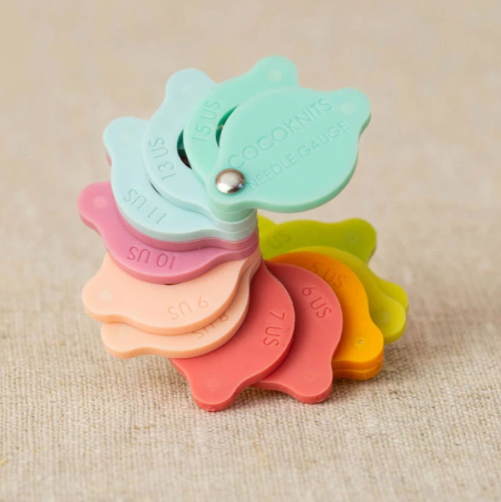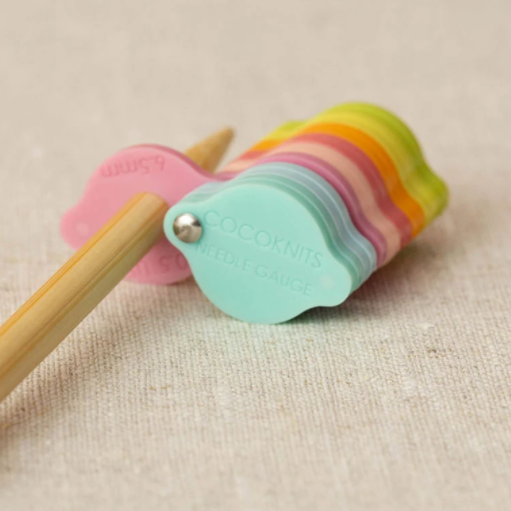Cocoknits found Julie Weisenberger long has wanted a tiny needle gauge tool for travel-knitting. The big squares or rectangles are okay for at-home knitting, but clumsy for travel - so she fashioned one based on those a jeweler would use to size diamonds. The result is a joyous rainbow stack of connected discs for identifying knitting needle sizes US 0-15 / 2-10 mm.
And because Cocoknits is committed to avoiding plastic wherever possible, they manufactured it from PLA, a 100% biodegradable, plant-based plastic substitute!
The discs swivel out and click back together with tiny magnets (which makes it as much fun to play with as use) and the whole rainbow tool is small enough to pop into the Accessory Roll so you'll never leave home without it.
- Each disc is imprinted in both US and mm needle sizes from US 0-15 / 2-10 mm
- Overall size (closed) is approximately 1" diameter X 1.5" high (2.5 cm X 4 cm)
- Disc are in an array of rainbow colors created to bring joy to your day and a smile to your face!
- Gauge clicks into place with tiny magnets embedded on the underside of each disc
- The discs are made from 100% fiber waste called polylactic acid, which is made from fermented plant starch such as corn, beets or sugar cane. It is 100% biodegradable and contains no plastic.
- The discs are arranged in ROYGBV - the beginning disc color is random. It varies for each Needle Gauge and cannot be chosen when ordered. Please visit your LYS to see the variety and pick your favorite.
- Swivel out the disc to access the hole and insert your needle. The smallest hole that your needle fits into is your needle size. If the needle is unable to be inserted, select the next size up, or if there is excess space, try the next size down.
- If your Needle Gauge accidentally gets wet, dry it off, then fan out the discs so they don’t become stuck together as they dry. If this happens, you should be able to force them apart again, but best to let them dry separately if possible
- Extremely humid conditions can affect the material. To return it to it's pre-humid state, keep it in a temperate, drier area for 24-48 hours and allow it to acclimate with discs fanned out.


